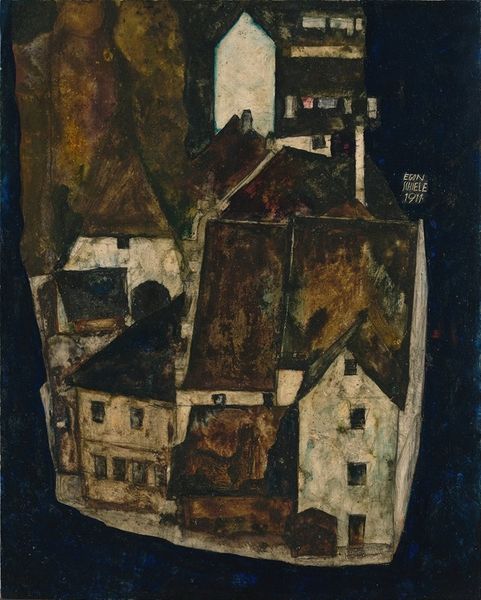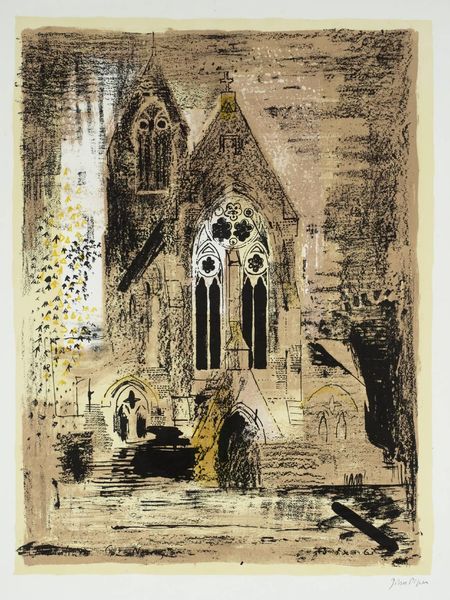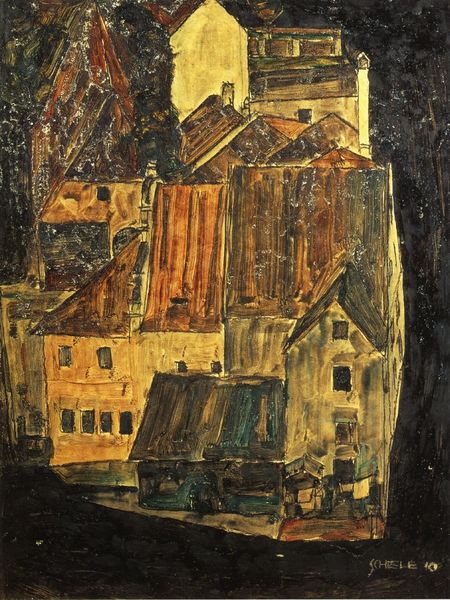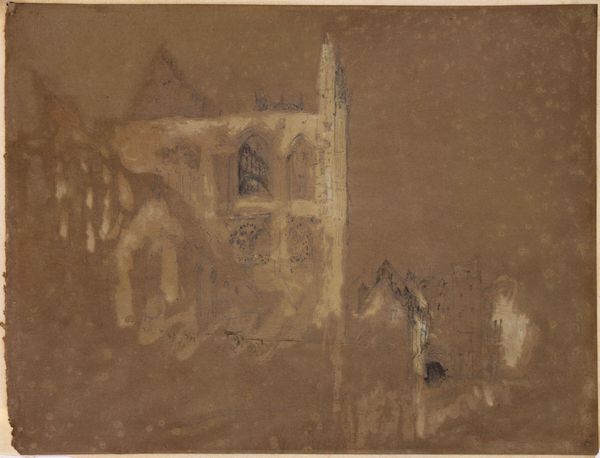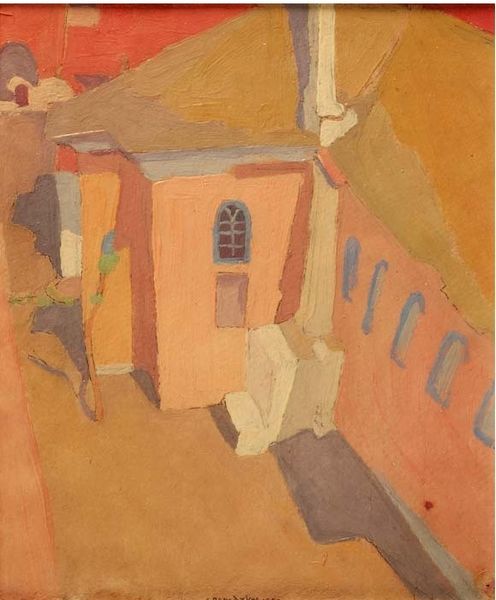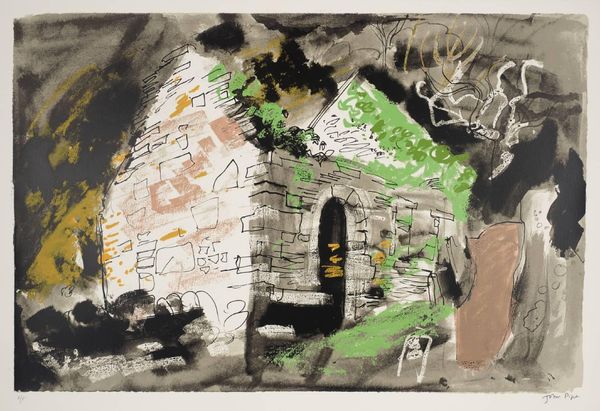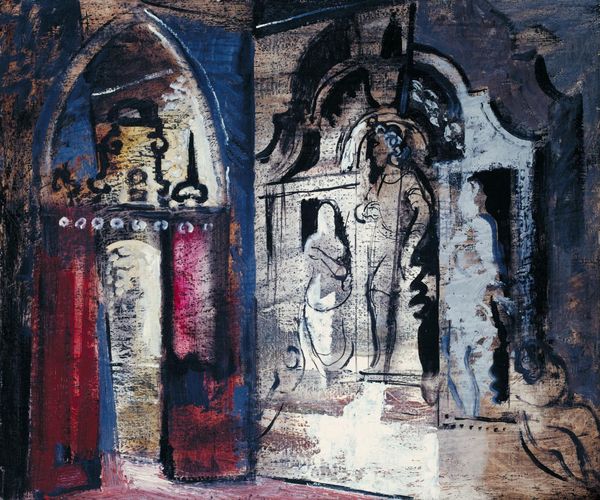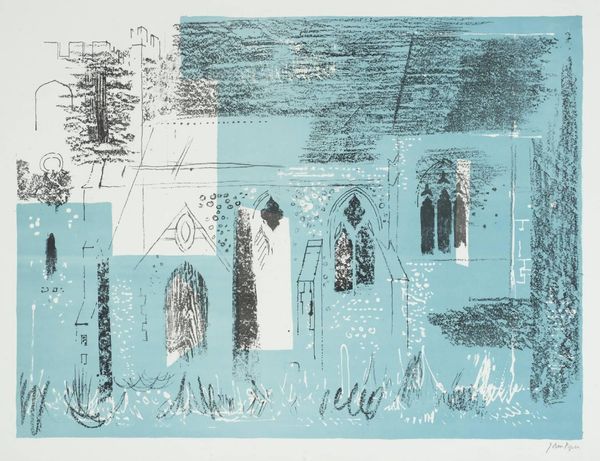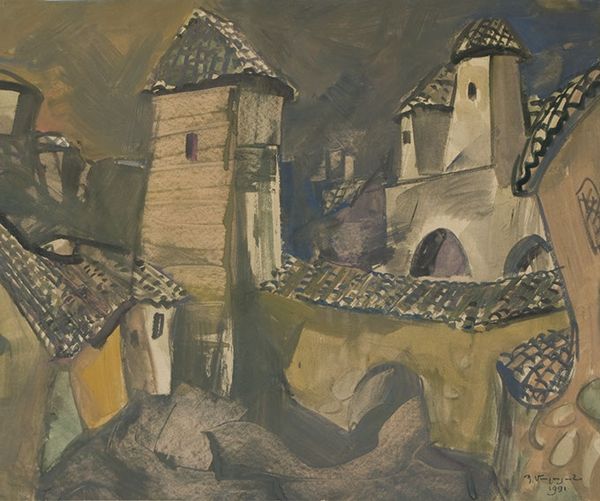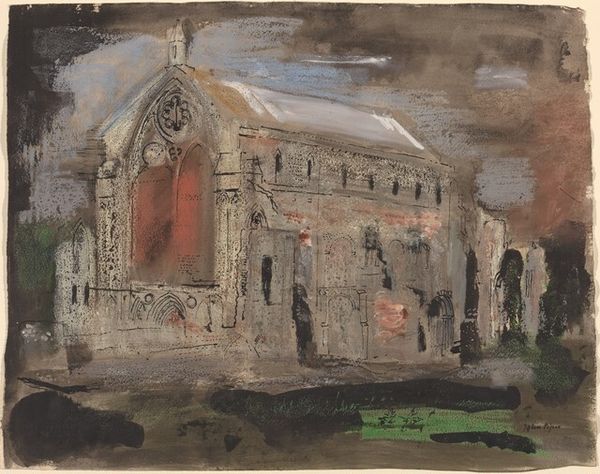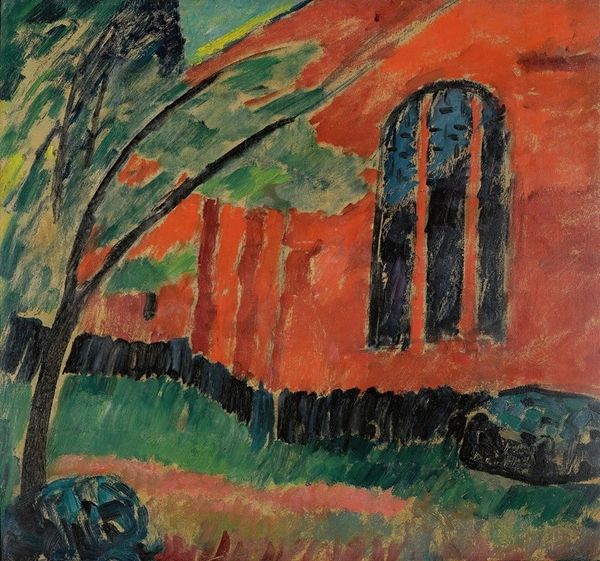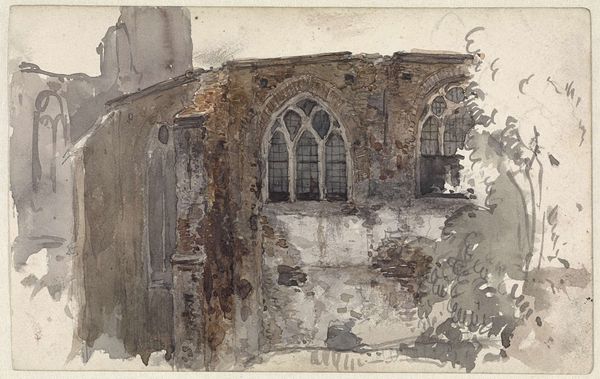
Dimensions: support: 762 x 635 mm
Copyright: CC-BY-NC-ND 4.0 DEED, Photo: Tate
Curator: John Piper's "St Mary le Port, Bristol" presents us with a haunting architectural fragment. What strikes you first? Editor: The sheer weight of history, and loss. It's as if the building is both present and dissolving simultaneously. Curator: Piper often explored the Romantic ruin, a popular subject in British art history, representing the sublime power of nature over human endeavor. Editor: Absolutely, and I see a loaded symbolism, a critique of power structures perhaps. Churches, after all, have historically been tools of control. Curator: It’s worth noting the painting’s potential context within the post-war rebuilding efforts, reflecting Britain's attempts to reconcile its past with the future. Editor: Yes, a potent visual metaphor. Thinking about how national narratives get constructed and who gets to write them… Curator: This piece really compels you to consider the multifaceted role architecture plays in our cultural memory. Editor: It does – prompting reflection on ruins, resilience, and the stories embedded within our built environment.
Comments
tate 7 months ago
⋮
http://www.tate.org.uk/art/artworks/piper-st-mary-le-port-bristol-n05718
Join the conversation
Join millions of artists and users on Artera today and experience the ultimate creative platform.
tate 7 months ago
⋮
Piper was commissioned as a war artist during the Second World War, painting civilian life in the UK during the conflict. He made a series of paintings of bombed buildings, visiting the sites to take photographs and make sketches. These formed the basis for a series of paintings. From 1940, he focused particularly on churches that had been damaged or destroyed. St Mary le Port was hit in the attacks on Bristol Docks in November 1940. Gallery label, April 2019
